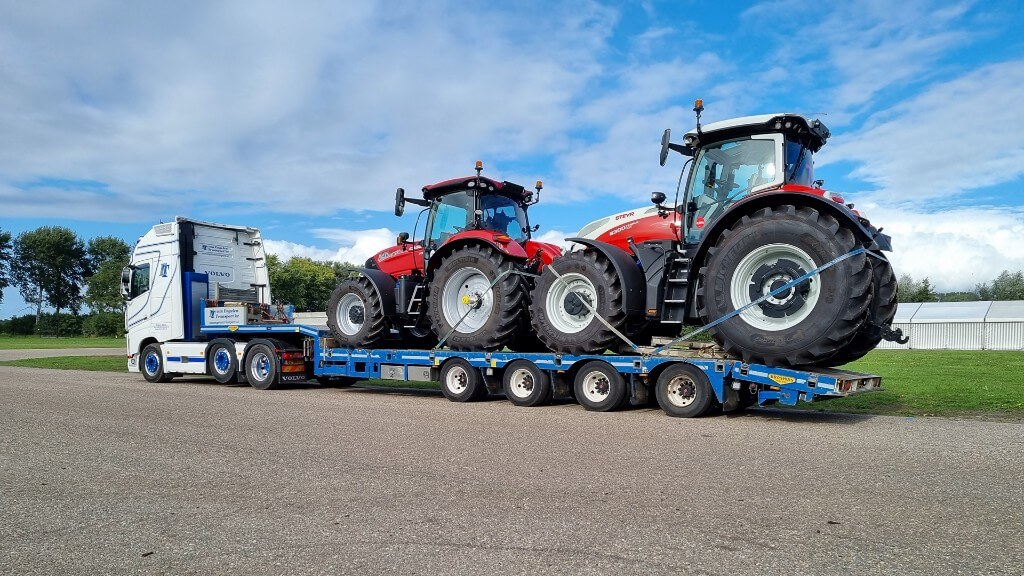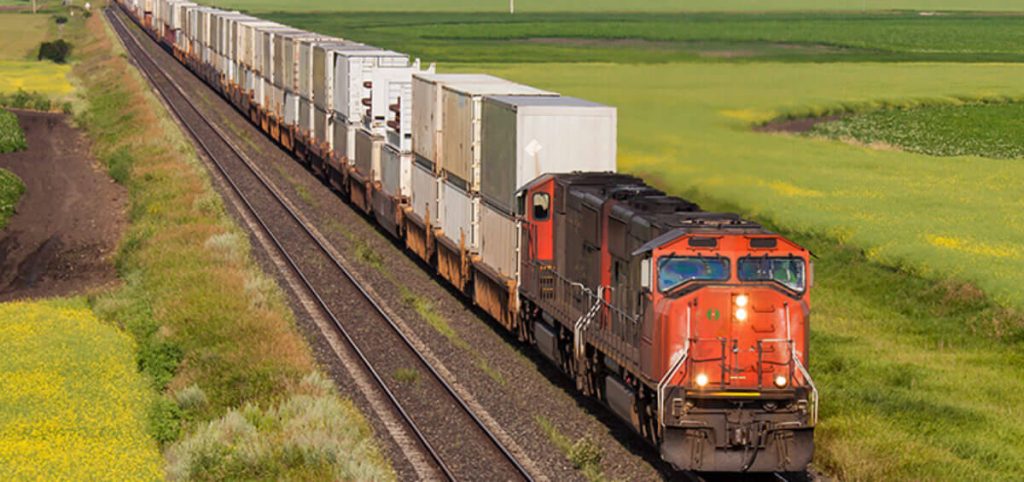In modern agriculture, purchasing farm equipment is an important decision faced by farmers and agribusinesses. Whether you choose to purchase locally or internationally has its own advantages and disadvantages that directly impact operational efficiency, costs and long-term profitability. In this article, we’ll take a closer look at the pros and cons of these two sourcing options to help you make an informed choice based on your needs.
When purchasing agricultural machinery, there are advantages and disadvantages to choosing local or international sourcing; local sourcing has the advantages of short delivery times, convenient after-sales service and support for local economic development, but may face higher prices, limited product choices and lagging technological innovations; international sourcing is usually cost-effective, with access to advanced technology and a wider range of product choices, but there are also long delivery times, logistics complexity, potentially inadequate after-sales service, and cultural and language barriers, among other challenges. Procurement decisions should therefore be based on a comprehensive assessment of specific needs, budgets and expectations of services.
Procurement decisions for agricultural machinery are critical in agricultural production, directly affecting the efficiency of farm operations, cost control and quality of output. However, the process of agricultural machinery procurement is often accompanied by a series of challenges and pain points, where farmers and agribusinesses need to make trade-offs between equipment quality, capital investment, and after-sales service. This paper will provide an in-depth understanding of these issues, which will help relevant agribusinesses develop smarter procurement strategies to ensure smooth and sustainable agricultural production.
Contents
- 1 Advantages of sourcing farm machinery locally
- 2 Disadvantages of local sourcing of farm machinery
- 3 Advantages of international sourcing of agricultural machinery
- 4 Disadvantages of international procurement of agricultural machinery
- 4.1 1. Quality Quandaries: The Good, the Bad, and the Unreliable
- 4.2 2. Spare Parts Scavenger Hunt: Where’s That Widget?
- 4.3 3. Regulatory Riddles: Navigating the Red Tape Maze
- 4.4 4. Tariff Troubles: The Price Tag Plot Twist
- 4.5 5. Logistical Labyrinths: Shipping Shenanigans
- 4.6 6. Resale Value Realities: The Depreciation Dilemma
- 4.7 In Conclusion
- 5 Procurement Efficiency Strategies
- 6 Referable cases
- 6.1 1. Hellmann Worldwide Logistics’ Partnership with a Leading Agricultural Machinery Producer
- 6.2 2. Productivity Enhancement in Agricultural Machinery Parts Procurement
- 6.3 3. Procurement Strategy Overhaul in a Multinational Agriculture Firm
- 6.4 4. Machinery Sharing Among Small-Scale Fruit and Vegetable Growers
- 6.5 5. Strategic Procurement in a Mid-Size Agritech Company
- 7 Conclusion
Advantages of sourcing farm machinery locally
1. Shorter lead times
A significant advantage of local sourcing is that lead times are shorter, with faster and more predictable delivery times, and purchasers can be allowed to place last-minute orders. Disruptions in the supply chain are commonplace and, in addition, planning for survival in the new normal that the epidemic has left us with is complicated. So, without a doubt, perhaps the most important advantage of local sourcing is its reliability, considering that goods are transported over much shorter distances with fewer problems likely to be encountered. You don’t have to worry about cargo being stranded due to port or airport closures. And, with increased reliability, it becomes much easier to deal with the risk factor of high-margin deals. With geographic proximity, transportation time and logistical complexity are greatly reduced, and farm equipment can be delivered more quickly, increasing the efficiency of procurement and production.
2. Reduced transportation costs
Local sourcing dramatically reduces transportation costs compared to international sourcing, and there are always tax issues to worry about when importing goods. This is not an insurmountable obstacle for any legitimate business, but for new businesses, local suppliers that allow them to bypass this expense are an excellent option. By choosing a local supplier, you can avoid many of the rare and common U.S. Customs clearance issues altogether, and businesses can avoid high international logistics costs, duties, and other related fees, thus lowering the overall cost of purchasing.
3. Convenient after-sales service and technical support
Local sourcing allows you to work more closely with local suppliers, who often provide more timely and convenient after-sales service. Local suppliers are able to respond quickly in terms of equipment maintenance, parts replacement and technical support, reducing equipment downtime and ensuring continuity of agricultural production. When dealing with international suppliers across the ocean, it is only natural that you can meet them in person at most once or twice a year, whereas locally, it is only a short trip to meet and discuss business with your local suppliers. Of course, this means that you can also have them customize some of their services for you, especially if you require certain parts that need to be custom manufactured to your needs or similar requirements.
4. Support local economic development
By sourcing locally, you can actively contribute to the development of your community and support the local economy. By providing business to nearby suppliers, you can help create jobs and stimulate economic development. This, in turn, can increase consumer spending within the community, which benefits other businesses. Additionally, building strong relationships with local suppliers fosters a sense of camaraderie and cooperation between businesses, which creates a support network conducive to mutual growth. Businesses directly support the local economy, creating jobs and contributing to community development. This not only helps to build a favorable corporate image, but also enhances ties and cooperation with the local community.
5. Better quality control and supply chain management
Working with local suppliers makes it easier for enterprises to conduct on-site visits and quality monitoring to ensure that products meet standards. At the same time, increased visibility and control of the supply chain can help to reduce supply chain risk, and if any of your suppliers run into problems, or you suddenly order goods yourself, you can resolve the situation more easily. A quick trip or phone call can put you in touch with a partner and find additional goods, and the proximity will make getting goods to you a breeze. Finally, this extra wiggle room will allow you to handle your business in a much easier way than ordering goods from overseas. After all, in this case, lost goods can take weeks to make up for.
6. Reduced environmental impact
One of the biggest advantages of local sourcing is its positive impact on the environment. Local sourcing reduces carbon emissions by cutting down on long-distance transportation, and by reducing the distance your goods have to travel, you can reduce carbon emissions and minimize the ecological footprint of your supply chain. With growing awareness of environmental issues and increasing consumer demand for sustainable practices, choosing local suppliers can greatly enhance your company’s reputation and attract environmentally conscious customers. Contribute to environmental sustainability goals. This is an important consideration for environmentally conscious businesses.
In summary, local procurement of agricultural machinery has significant advantages in terms of delivery time, transportation costs, after-sales service, quality control and environmental impact. However, when making purchasing decisions, enterprises still need to consider their own needs, budgets and other relevant factors to choose the most suitable purchasing method.
Disadvantages of local sourcing of farm machinery
While there are certainly advantages to choosing local sourcing in the agricultural machinery procurement process, there are also some disadvantages that cannot be ignored. The following are the main disadvantages that local procurement of agricultural machinery may face:
1. Limited product choices
The local market for agricultural machinery may be limited in terms of the types and models of products available to meet the needs of different farmers for specific features or advanced technologies. Local suppliers might not be able to offer you top-of-the-line goods. They are likely solid and reliable manufacturers, yes. But with the world as a stage for your business, it is always possible to find someone producing better versions of the product you are interested in. So, you are more or less choosing between reliability versus quality. Of course, there are exceptions.This limits farmers’ access to equipment best suited to their agricultural production needs.
2. Insufficient price competitiveness
Local sourcing might come with higher production and labor costs compared to countries with lower manufacturing expenses. This can affect the cost competitiveness of your products in the global market. Due to the lack of direct competition with international markets, locally produced agricultural machinery may be relatively expensive. This increases procurement costs for farmers with limited budgets and may influence their purchasing decisions.As a result, careful cost-benefit analysis is essential to ensure that the benefits of local sourcing outweigh the potential price disadvantages.
3. Lagging technological innovation
While local suppliers offer reliability, they may not always have the capacity or expertise to provide highly specialized or cutting-edge products. In industries where innovation is crucial, you might need to explore international options to access the latest advancements and unique offerings.Some local agricultural machinery manufacturers have not invested sufficiently in technological research and development and innovation, resulting in products that lag behind international advanced levels in terms of performance, efficiency and environmental protection. This could affect the modernization of agricultural production.
4.Quality and reliability issues
Deficiencies in quality control and reliability of some local agricultural machinery products may lead to higher equipment failure rates, increasing repair and maintenance costs and affecting the continuity of agricultural production.Even though they are more reliable, local suppliers can have efficiency problems. They tend to be smaller and have a smaller production capacity. Of course, as you work together and prosper, they might expand their business and build more facilities. But then you run the risk of our first cons: their reliance on your purchases growing to the point they practically only cater to you.
5.Uneven regional development
There are differences in the level of development of the local agricultural machinery industry in different regions, which makes it difficult for farmers in certain areas to obtain high-quality agricultural machinery products and services, limiting the development of local agricultural mechanization.
6. Strong supply chain dependencies
Over-reliance on local supply chains may lead to increased vulnerability of the supply chain in the face of unforeseen circumstances, such as natural disasters and economic fluctuations, affecting the timely supply and maintenance of agricultural machinery. Diversifying your sourcing strategy can help mitigate these risks and ensure a more resilient supply chain.
7.Insufficient economies of scale
Local manufacturers of agricultural machinery may have difficulties in realizing economies of scale due to their small scale of production, resulting in higher production costs, which in turn affects the competitiveness of their products in the market.It might sound odd. But be it for the supplier or the business, over-dependence is not great. If a supplier starts to prioritize the demands of the company they rely on for the majority of their profits, it can seriously impact their competitiveness in the market. They can grow too specialized to grow their business, and it can be challenging to secure new contracts. There is also the matter of their new product development slowing or halting entirely. It means that they might eventually be left behind and lose their chief source of income as well. It would make demand planning for the buyers difficult as well if planning to branch out to new products.
In summary, although local procurement of agricultural machinery has advantages in terms of delivery time and after-sales service, it also has certain disadvantages in terms of product selection, price, technological innovation and quality. When making purchasing decisions, farmers need to consider their own needs, budgets, and expectations of equipment performance, weigh the advantages and disadvantages of local and international purchasing, and choose the most appropriate purchasing method.

Advantages of international sourcing of agricultural machinery
In the ever-evolving world of agriculture, staying ahead often means looking beyond your backyard. International procurement of farm machinery isn’t just a trend; it’s a strategic move that can revolutionize your farming operations. Let’s dive into the compelling advantages of casting your net globally when sourcing agricultural equipment.
1. Cost-Effectiveness: More Bang for Your Buck
Imagine securing top-tier machinery without breaking the bank. Countries like China have mastered the art of producing high-quality tractors and harvesters at a fraction of the cost found elsewhere. Lower labor expenses and streamlined manufacturing processes translate into significant savings for you. Why pay more when you can get the same—if not better—quality for less?
2. Access to Cutting-Edge Technology
Agricultural tech is advancing at lightning speed. By looking internationally, you tap into innovations that might not yet be available locally. From GPS-guided tractors to AI-driven harvesters, global markets offer a treasure trove of advanced machinery ready to elevate your farm’s productivity.
3. A Smorgasbord of Options
Why settle for a limited selection when the world is your oyster? International markets present a vast array of equipment tailored to diverse farming needs. Whether you’re managing a boutique vineyard or expansive grain fields, there’s machinery out there designed just for you.
4. Customization Galore
One size doesn’t fit all in farming. Many overseas manufacturers offer customization options, allowing you to tweak machinery specs to perfectly align with your operational requirements. It’s like getting a bespoke suit, but for your farm.
5. Quality That Speaks Volumes
Gone are the days when “imported” was synonymous with “inferior.” Today, numerous international manufacturers adhere to stringent quality standards, ensuring that the machinery you import is built to last and perform. It’s quality you can trust, straight from the global stage.
6. Strengthening Global Ties
Engaging in international procurement isn’t just about machinery; it’s about building relationships. Establishing connections with global suppliers can open doors to new markets, collaborations, and insights, enriching your farming enterprise in unexpected ways.
7. Sustainable Solutions
Many international manufacturers are at the forefront of eco-friendly innovations, offering machinery that aligns with sustainable farming practices. By importing such equipment, you’re not only boosting efficiency but also contributing to a greener planet.

Disadvantages of international procurement of agricultural machinery
Venturing into the global market to procure farm machinery might seem like a savvy move, promising cost savings and access to cutting-edge technology. However, this path is fraught with potential pitfalls that can turn your dream deal into a logistical nightmare. Let’s delve into the less glamorous side of international farm equipment procurement.
1. Quality Quandaries: The Good, the Bad, and the Unreliable
While international markets, particularly countries like China, offer attractively priced farm machinery, the adage “you get what you pay for” often rings true. Quality inconsistencies are a prevalent concern, with some equipment failing to meet durability and performance expectations. Imagine investing in a tractor that spends more time in the repair shop than in the field—frustrating, right?
2. Spare Parts Scavenger Hunt: Where’s That Widget?
Securing replacement parts for foreign machinery can be akin to finding a needle in a haystack. Limited availability and long shipping times can lead to prolonged equipment downtime, disrupting your farming operations and affecting your bottom line. It’s like owning a fancy sports car in a remote town with no access to specialized mechanics or parts.
3. Regulatory Riddles: Navigating the Red Tape Maze
Importing agricultural machinery isn’t as simple as clicking ‘buy now.’ Different countries have varying safety, emissions, and performance standards. Ensuring that your imported equipment complies with local regulations can be a bureaucratic headache, potentially leading to additional modifications, delays, or even fines. It’s essential to do your homework before making a purchase.
4. Tariff Troubles: The Price Tag Plot Twist
Trade policies are ever-changing, and tariffs can significantly impact the final cost of your imported machinery. For instance, recent trade tensions have led to increased tariffs on steel and aluminum, directly affecting the price of farm equipment. These unforeseen expenses can erode the initial cost savings that attracted you to international procurement in the first place.
5. Logistical Labyrinths: Shipping Shenanigans
Coordinating the transport of heavy machinery across international borders is no small feat. Challenges such as handling oversized loads, navigating customs procedures, and managing potential delays can make the process complex and time-consuming. It’s not just about getting the equipment from point A to point B; it’s about doing so efficiently and without unexpected hiccups.
6. Resale Value Realities: The Depreciation Dilemma
Imported machinery, especially lesser-known brands, may not hold their value as well as their domestic counterparts. When it’s time to upgrade or sell, you might find that your equipment has depreciated more than expected, making it harder to recoup your investment. Brand recognition and perceived reliability play significant roles in resale value.
While the allure of international farm machinery procurement is understandable, it’s crucial to weigh these potential drawbacks against the perceived benefits. Conduct thorough research, consult with industry peers, and consider the long-term implications before making a decision. Sometimes, the grass isn’t greener on the other side—it’s just a different shade.
In Conclusion
Venturing into the international market for farm machinery is more than a purchasing decision—it’s a strategic move towards enhanced efficiency, innovation, and global integration. While it’s essential to conduct thorough research and due diligence, the potential rewards are vast. So, why limit yourself? The world is brimming with opportunities to elevate your farming game.

Below is a comparison of the advantages and disadvantages associated with local and international procurement methods:
| Procurement Method | Advantages | Disadvantages |
| Local Procurement | – Quick Response and Delivery: Local suppliers can often deliver products faster, meeting urgent needs. – Convenient Quality Control: Proximity allows for easier on-site inspections to ensure product quality. – Supports Local Economy: Purchasing locally helps boost local employment and economic growth. – Accessible After-Sales Service: Easier communication facilitates timely maintenance and repair services. | – Potentially Higher Costs: Local products may be priced higher than similar items in the international market. – Limited Selection: Fewer local suppliers might mean a narrower range of products. – Slower Technological Advancements: Local products may lag behind international counterparts in terms of technology. |
| International Procurement | – Cost Efficiency: Some countries offer agricultural machinery at lower prices, providing a cost advantage. – Advanced Technology: Access to cutting-edge agricultural equipment and technology. – Diverse Product Range: A broader selection of products to meet various needs. | – Quality Variability: Product quality can vary, necessitating careful supplier selection. – Complex Logistics: Longer shipping times and customs procedures can complicate delivery. – Challenging After-Sales Support: Time zone differences and language barriers may hinder effective communication and service. – Regulatory and Compliance Risks: Import policies and tariffs can affect procurement costs and processes. |
When choosing a procurement method, you need to consider your own needs, budget, time and expectations of after-sales service and other factors, weigh the pros and cons, and make the most suitable decision.
Procurement Efficiency Strategies
In the process of purchasing agricultural machinery, users often face key issues such as cost control, after-sales service guarantee and supplier reputation assessment. To address these issues, the following strategies can be used for reference:
1. How to reduce costs in local purchasing
– Participate in purchasing cooperatives: Join or form a local purchasing cooperative to jointly purchase agricultural machinery with other farmers. Through collective bargaining, more favorable prices and conditions can be obtained, thus reducing purchasing costs.
– Optimize equipment utilization: Evaluate the use of existing equipment and avoid duplicate purchases. Through rational scheduling, the efficiency of equipment utilization can be improved and idle time can be reduced, thus lowering the total cost of ownership.
– Regular maintenance and upkeep: Establish a preventive maintenance program for equipment, inspect and maintain machinery on a regular basis to extend its service life and reduce high repair costs due to breakdowns.
2. How to ensure after-sales service in international procurement
– Choose international suppliers with local service networks: When choosing overseas suppliers, give priority to brands with local service centers or authorized repair points. This will ensure timely technical support and repair services in case of equipment problems.
– Clarify after-sales service terms: Before signing the procurement contract, understand and confirm in detail the after-sales service content provided by the supplier, including the warranty period, maintenance response time, spare parts supply, etc.. Incorporate these terms into the contract in writing to ensure your rights and interests.
– Establish an emergency response plan: Considering the maintenance delays that may be caused by international logistics, stock up on key spare parts in advance, or establish a cooperative relationship with local maintenance service providers in case of emergencies.
3. Methods of assessing suppliers’ credibility and reliability
– Conducting supplier due diligence: Collect basic information of suppliers, including business licenses, financial statements, customer evaluations, etc., and assess their business conditions and market reputation.
– Site visit and quality certification: If conditions permit, conduct a site visit to the supplier’s production facilities to understand its production capacity and quality control system. Check whether they have passed ISO and other relevant quality certifications to ensure product quality.
– Refer to feedback from existing customers: Contact the supplier’s existing customers to learn about their cooperation experience, including information on product quality, delivery timeliness, after-sales service, etc., in order to judge the supplier’s reliability.
Through the above strategies, users can effectively reduce costs, ensure the quality of after-sales service, and select reputable and reliable suppliers in local and international procurement of agricultural machinery, thus optimizing purchasing decisions and improving the efficiency of agricultural production.

Referable cases
Effective procurement of agricultural machinery is crucial for enhancing operational efficiency and productivity in the agricultural sector. Below are several case studies illustrating successful procurement strategies, both local and international:
1. Hellmann Worldwide Logistics’ Partnership with a Leading Agricultural Machinery Producer
Background: A prominent agricultural machinery manufacturer with a global presence sought to optimize its procurement logistics across Europe.
Challenge: The company needed a logistics partner to manage inbound and outbound road transport from over 1,000 European suppliers to factories in Germany, France, and Hungary. Key requirements included establishing a Control Tower setup, centralized billing, and ensuring just-in-time deliveries.
Solution: Hellmann Worldwide Logistics developed a Control Tower system for countries including France, Italy, Spain, and Portugal. This system provided local service to each plant while maintaining global transparency and control. Centralized logistics management and performance monitoring were handled centrally, with local operations ensuring effective communication and timely deliveries.
Outcome: The partnership resulted in improved material flow stability, enhanced supply chain integrity, and the ability to adapt to seasonal demand fluctuations inherent in the agricultural industry.
2. Productivity Enhancement in Agricultural Machinery Parts Procurement
Background: A large agricultural firm faced significant delays in procuring machinery parts, leading to frequent downtime and reduced productivity.
Challenge: The company’s operations were hindered by parts shortages, negatively impacting revenue and operational efficiency.
Solution: The firm diversified its supplier base by identifying new, reliable suppliers and negotiating favorable terms to ensure a steady supply of essential parts. Additionally, they implemented a robust inventory management system utilizing real-time data to monitor stock levels and predict future demand.
Outcome: These strategies led to a significant reduction in machinery downtime, improved agricultural output, and increased profitability, demonstrating the effectiveness of strategic procurement practices.
3. Procurement Strategy Overhaul in a Multinational Agriculture Firm
Background: A multinational agriculture firm experienced escalating procurement costs and supply chain inefficiencies due to outdated practices and weak supplier relationships.
Challenge: The company sought to modernize its procurement strategy to regain competitiveness and market share.
Solution: The firm conducted a comprehensive assessment of its procurement processes, implemented strategic sourcing planning, redesigned workflows, and enhanced negotiation and contract management practices.
Outcome: The overhaul achieved a 20% reduction in procurement costs, a 30% improvement in supplier performance, and a 25% increase in process efficiency through automation, significantly enhancing profitability and market positioning.
4. Machinery Sharing Among Small-Scale Fruit and Vegetable Growers
Background: Small-scale farmers often face challenges in accessing specialized machinery due to high costs.
Challenge: Limited financial resources made it difficult for individual farmers to invest in necessary equipment, hindering productivity.
Solution: Groups of farmers collaborated to share machinery, developing sharing agreements and schedules to ensure equitable access.
Outcome: This arrangement allowed farmers to cost-effectively access specialized equipment, improve labor efficiency, and foster knowledge sharing among peers. Challenges such as scheduling conflicts were mitigated through careful planning and open communication.
5. Strategic Procurement in a Mid-Size Agritech Company
Background: A mid-size agritech company specializing in precision farming faced rising raw material costs and declining operational efficiency due to outdated procurement processes.
Challenge: The company needed to optimize its procurement strategy to improve cost efficiency and supply chain resilience.
Solution: The company implemented advanced procurement software, expanded into new markets, adopted IoT and AI technologies, and developed sustainable farming practices.
Outcome: These initiatives led to a 15% reduction in procurement costs, a 10% increase in market share, and enhanced operational efficiency, positioning the company for sustainable growth.
These case studies underscore the importance of strategic procurement decisions in the agricultural sector. By adopting innovative approaches, diversifying supplier bases, leveraging technology, and fostering collaboration, organizations can enhance efficiency, reduce costs, and improve overall productivity.

Conclusion
The choice between local and international sourcing in agricultural machinery procurement decisions requires a combination of factors. Local sourcing usually offers faster delivery times and convenient after-sales services, but may face the challenges of higher costs and limited product choices. On the other hand, international sourcing may offer advantages in terms of cost and technological sophistication, but may have to deal with logistical complexities, quality control and after-sales service assurance. Therefore, purchasers should weigh the pros and cons and develop the most suitable sourcing strategy based on their needs, budget, time requirements, and expectations for after-sales service.
Among many agricultural machinery brands, MINNUO stands out for its excellent quality and customized services. As a professional farm machinery manufacturer with 36 years of experience, MINNUO offers a wide range of tractor models covering 25 to 300 hp, as well as equipment such as harvesters and planters that can meet the individual needs of different farms. In addition, MINNUO has established a perfect after-sales service system around the world to ensure that users receive timely and efficient technical support during the use of equipment.
By choosing a brand with high-quality products and perfect service like MINNUO, users can effectively solve the various pain points in the procurement of agricultural machinery and improve the efficiency and profitability of agricultural production.

